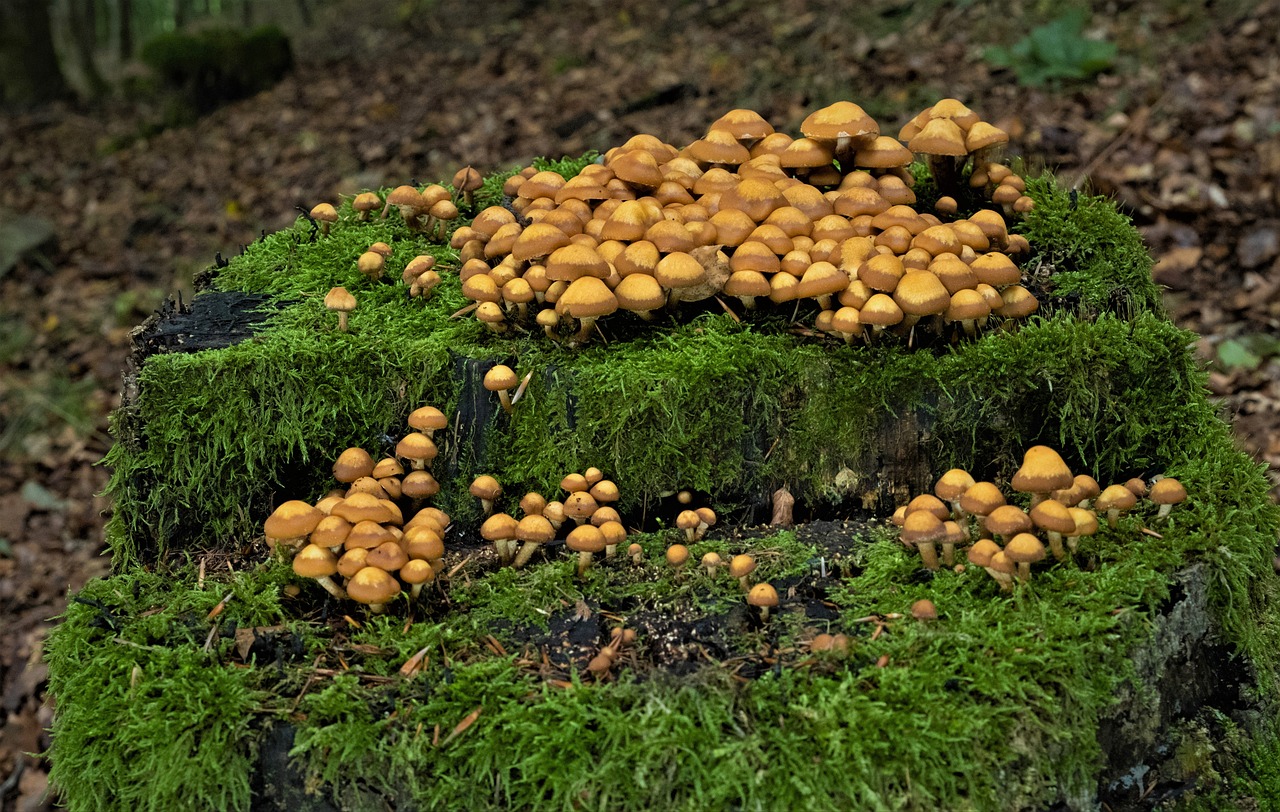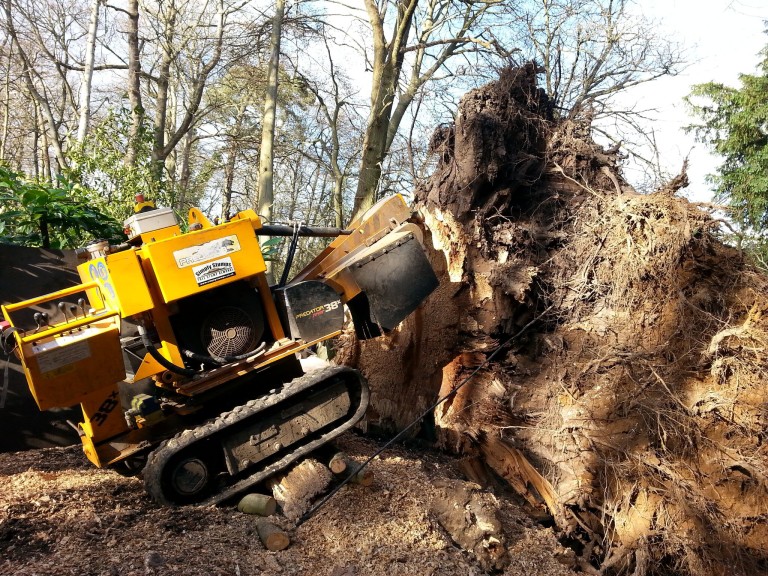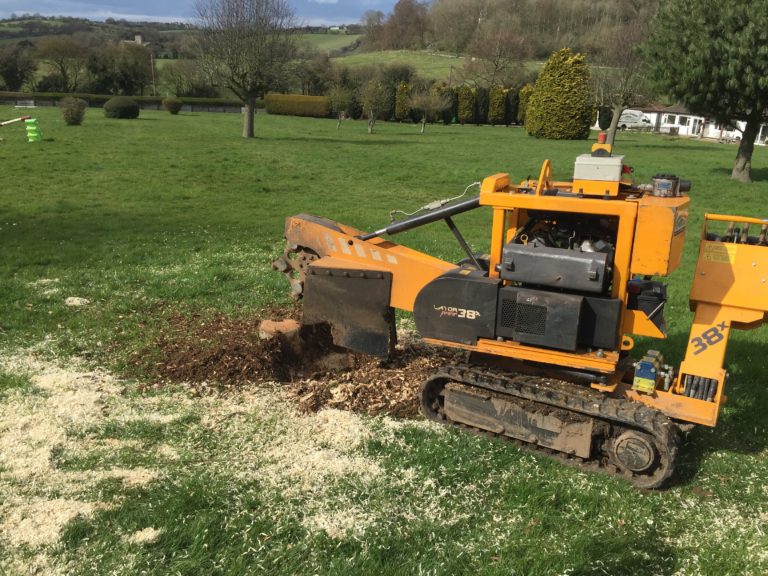What is Honey Fungus?
This Article and information below is summarized from reading articles by the Royal Horticultural Society and Wikipedia click links to read full articles.
Honey fungus, also known as Armillaria mellea, is a type of parasitic fungus that infects and kills trees and other woody plants. It is one of the most destructive pathogens of trees and has a wide host range, including hardwood and softwood trees. The fungus is commonly found in gardens, forests, and other wooded areas, and is known for its distinctive honey-coloured mushrooms that grow on the infected wood and roots.
The fungus begins its infection by colonising the roots trees and other woody plants. Once it has established itself in the roots, it begins to spread through the tree’s vascular system, eventually reaching the trunk and branches. As it spreads, it causes the tree to become weaker and more susceptible to other diseases and pests. In addition, it can also harm the surrounding plants as it can spread through the roots.
One of the most visible signs of a honey fungus infection is the presence of honey coloured mushrooms growing at the base of the tree or on the roots. These mushrooms are distinctive rings around the stem and tend to grow in clumps of many fruiting bodies. Other signs of infection include yellowing leaves, wilting branches, and a gradual dieback and decline in the tree’s overall health. Additionally, the tree may also develop cankers or discoloration on the bark.
Honey fungus is a perennial fungus, meaning it can survive in the dead wood of the host tree for several years, waiting for an opportunity to infect a new host. This means that even if a tree is removed, the fungus can still survive in the stump and roots and infect new trees nearby.
The fungus can be difficult to control once it has established itself in a tree, and it is often necessary to remove the infected tree to prevent the spread of the fungus to other trees. However, even with removal of the infected tree, the fungus can still survive in the roots and stumps and infect new trees
What does honey fungus look like?
Honey fungus is known for its distinctive honey-coloured mushrooms that grow on the infected wood. These mushrooms typically have a cap that ranges in colour from pale yellow to orange or even brown. They have a distinctive ring around the stem and the cap can be convex or flattened. They grow in clusters and can be quite large, with the cap measuring up to 15cm across. They usually have white gills and a solid stem.
The cap of the mushroom can be smooth or slightly scaly, and the texture can be moist or dry. The gills underneath the cap are typically white, and the stem is usually the same colour as the cap. The mushrooms can grow in large clusters, and they often appear at the base of the infected tree or on the roots.
It is important to note that the mushrooms are not always present, and the fungus can still be present and actively infecting a tree even if mushrooms are not visible. In this case, other signs of infection should be looked for, including yellowing leaves, wilting branches, and a gradual decline in the tree’s overall health. Additionally, the tree may also develop cankers or discoloration on the bark.
It is important to seek professional help to confirm the identification of the fungus as other mushrooms may resemble honey fungus, but they may not be the same species.
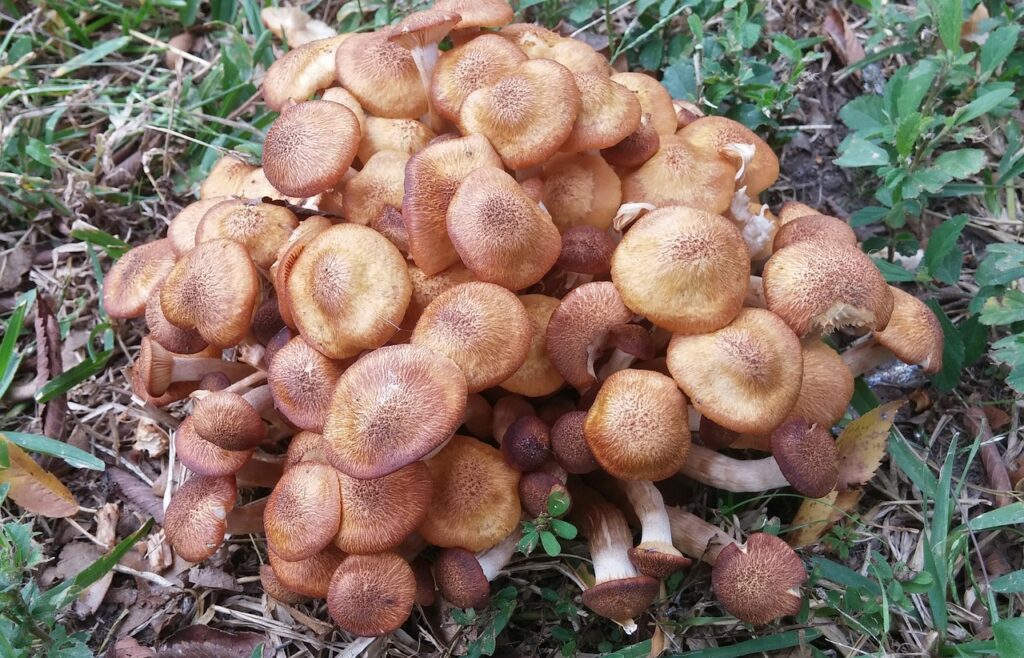
How removing tree stumps helps stop the spread of honey fungus?
Removing tree stumps is an important step in preventing the spread of honey fungus. Tree stumps are a common breeding ground for the fungus, and they can continue to spread the infection even after the tree has been removed. This is because the fungus can survive in the dead wood of the host tree for several years, waiting for an opportunity to infect a new host. By removing the stump, the fungus is deprived of its breeding ground and will not be able to infect new trees so easily.
Removing the tree stump is not always an easy task. Stumps can be removed manually by digging them out, but this can be time-consuming and labour-intensive. Alternatively, a stump grinding machine can be used to grind the stump down deep below ground level removing the main part of the root system. This method is faster and more efficient, but it does require the use of specialised equipment.
It is important to ensure that the main part of the root system is removed,. The fungus can still spread as even a small portion of the roots remain in the ground can harbour the fungus but the process greatly reduces the food source which it can draw upon. This is why it is important to consult with a professional stump grinding company to make sure that the stump is ground as much as possible.
In addition to removing tree stumps, there are several other steps that can be taken to prevent the spread of honey fungus in the garden. These include:
Regularly monitoring your trees and other plants for signs of infection
Pruning away infected branches and disposing of them properly. Using mulch and other organic matter to promote healthy soil and discourage the growth of the fungus
Planting trees and other woody plants that are resistant to the fungus. Some species of trees show a natural resistance to honey fungus and can often thrive in areas known to contain honey fungus. If there has been a problem with trees and shrubs dying as a result of infection then it may be worth avoiding replanting with trees which are susceptible to being infected with honey fungus and to replace with trees that show resistance to attack. The RhS have compiled the list which can help you to select more resistant species of trees and shrubs to replant which can be found here:
By removing tree stumps and taking other preventive measures, the spread of honey fungus can be controlled, and the health of your trees and other woody plants can be protected. It is important to act quickly when identifying honey fungus as it can spread rapidly and be hard to contain once it becomes established.
How tree stump grinding is the best solution to slow the spread of honey fungus?
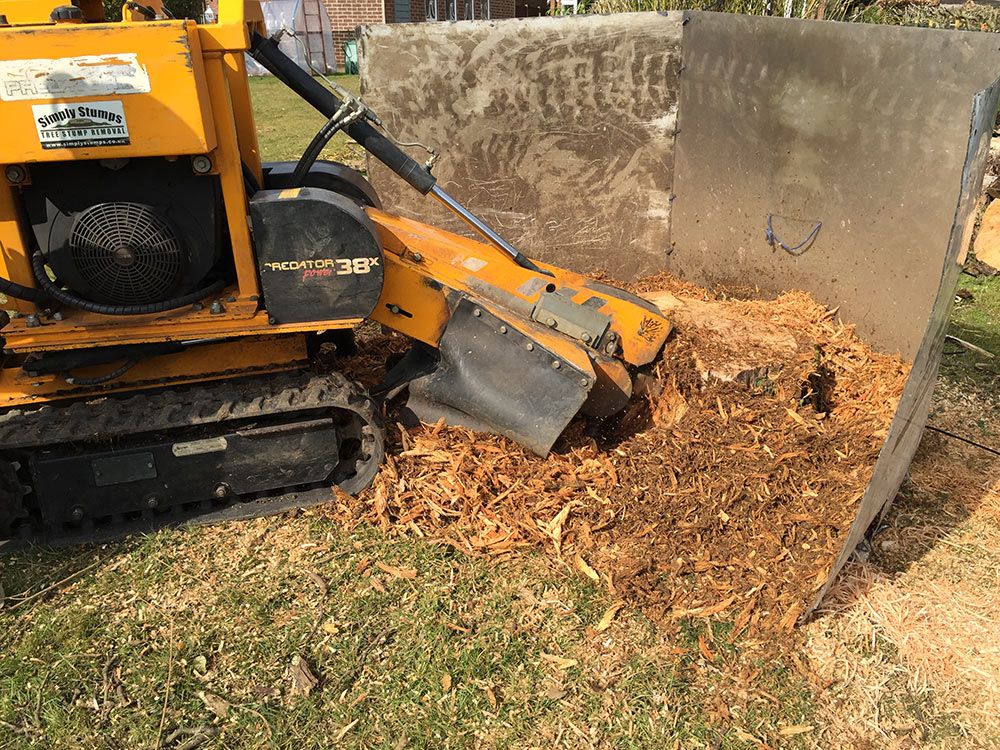
Tree stump grinding is considered the best way to slow the spread of honey fungus as it is a more efficient and effective method than manually digging out stumps. When a tree is infected with honey fungus, the fungus can survive in the dead wood of the host tree for several years, waiting for an opportunity to infect a new host. By removing the stump, the fungus is deprived of its breeding ground and will not be able to infect new trees. Grinding the stump down to well below ground level using a specialised machine ensures that the majority of the root system is removed, which is critical in removing the food source for the fungus, thus preventing the ability of the fungus to spread.
Additionally, grinding the stump eliminates the need to manually dig out the stump, which is time-consuming and labour-intensive. Overall, tree stump grinding is a highly effective method for controlling the spread of honey fungus and protecting the health of your trees.


